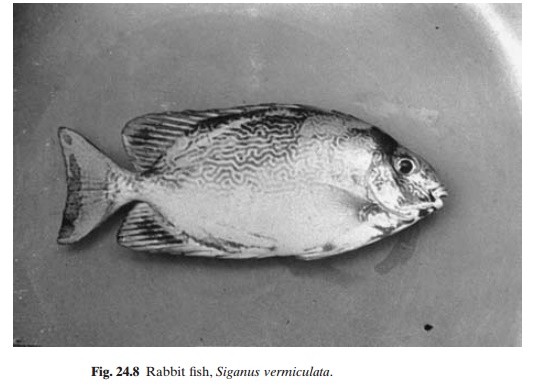Chapter: Aquaculture Principles and Practices: Other Finfishes
Fry collection and induced spawning of Rabbit fishes
Fry collection and induced spawning
Though some progress has been made in controlled spawning, all culture operations so far are based on fry collected from the wild. Juveniles are available from February to May and again from August to October or November (December in Palau). They are found usually around reef flats and are collected with push nets, scoop or dip nets, seines and cast nets. An improved mobile pyke net was found to be an efficient fry collector in seagrass beds in the Red Sea in Saudi Arabia.
The spawning season appears to be from January or February to April in several areas. According to Lichatowich et al. (1984), it is likely to be April to August in the Red Sea.
Siganus canaliculatus juveniles grow to adultsize in about nine months, when they mature and spawn. In captivity they may mature even earlier. Spawning is influenced by the lunar cycle and the species has been observed to spawn four to seven days after the new moon during the spawning season. The number of eggs spawned at a time is estimated to be 300 000–400 000.
Siganids can be induced to spawn spontaneously in tanks and aquaria. The sudden transfer of mature fish from a tank with about 90 cm water to a shallow tank with only 18–23 cm resulted in immediate spawning of S. canaliculatus in Palau. It has been observed that thefemales release the eggs as soon as the males shed milt and fertilization takes place in the tank. Siganus rivulatus has been found to spawn in aquaria in Israel when the water is exchanged with fresh sea water. Siganuscanaliculatus and S. argenteus have beeninduced to ovulate and spermiate by injection of HCG.
Larvae of S. canaliculatus have been reared to the post-metamorphosis stage, with successive feeding on mixed phytoplankton, rotifers (Brachionus), copepods (Oithona) and Artemia nauplii. Larvae of S. rivulatus and S. luridus have also been reared by similar feeding and grown to the juvenile stage.

Related Topics